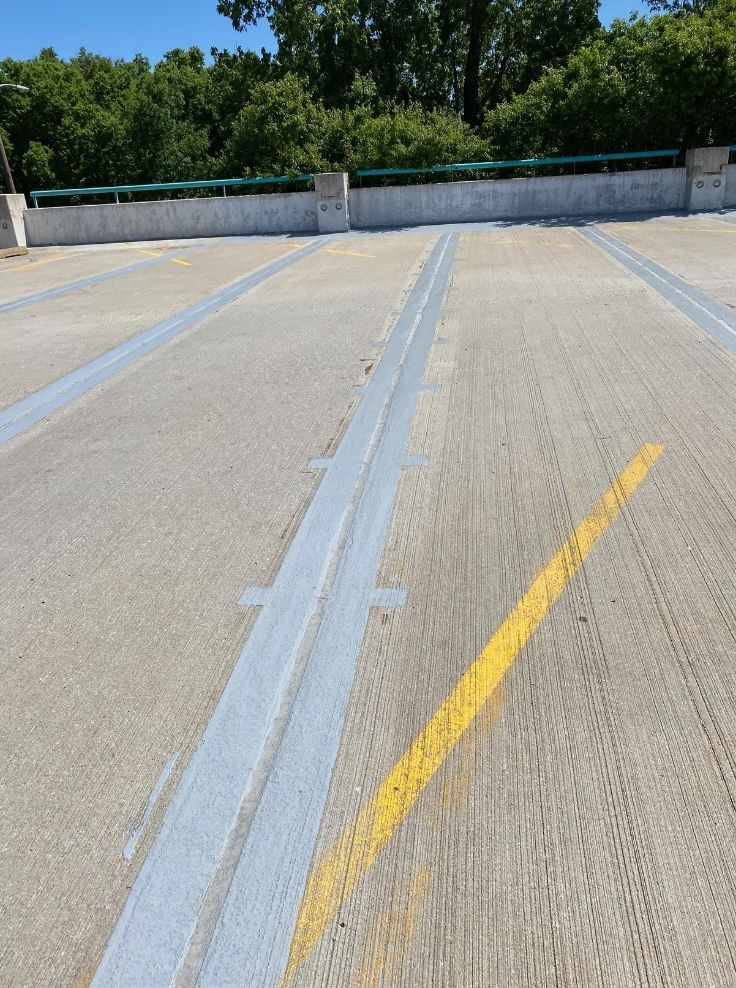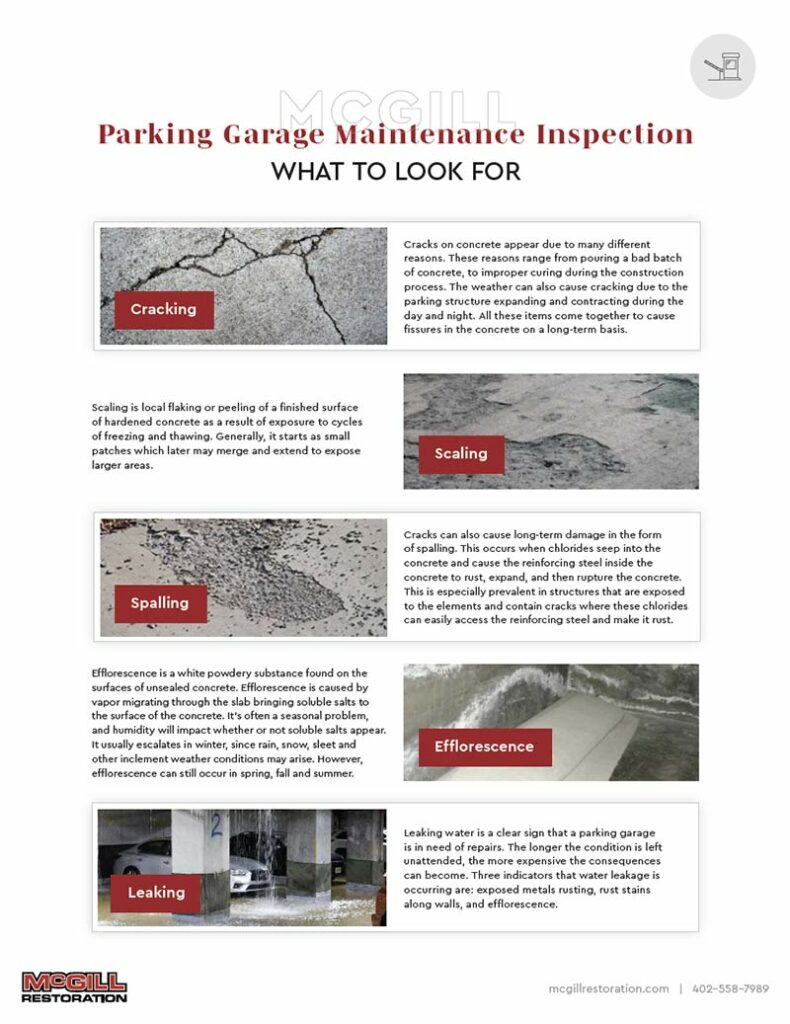Table of Contents
Joint sealant health is critical for the longevity of your parking garage structure or masonry project. Every joint represents an opportunity for water to enter and deteriorate the raw materials and integrity of the overall structure.
Regular inspections are an absolute necessity to identify and renew failing joint sealants. Caring for the joints is a maintenance task that can significantly extend the life of your structure and industrial masonry project.
Why Are Joint Sealants Critical to Parking Garage Structures?
Joint sealants represent the first line of defense against water intrusion. While a typical joint is less than an inch wide, water can enter, freeze, thaw, and erode the concrete. In nature, this action is called frost wedging and it’s the primary mechanism of breaking apart giant rocks and eroding mountains over time.
If frost wedging can bust pieces off giant rocks and erode entire mountains, imagine what it can do to a concrete parking garage or industrial structure.
Water runs off a properly sealed joint, flowing toward planned drainage away from the structure in a way that prevents pooling, erosion, and freeze-thaw cycles. A properly sealed joint:
- Prevents water from entering the gap.
- Flexes with building movement.
- Resists fracturing under stress.
- Protects vulnerable points in your structure.
Caulk vs. Sealant and Understanding Life Span
Caulk has a short lifespan and is designed to fill gaps and joints where stress is minimal. A sealant uses higher-grade compounds to account for flex and deterioration in more exposed and stressed environments like industrial masonry applications. Both are important lines of defense against deterioration and should be inspected regularly.
A typical caulk has a short 3-5 year lifespan while high-grade silicone sealants have 10-20 years and urethane sealants have 4-6 years. This means sealant in a joint where contact and stress are minimal can last for a very long time but it does not mean your joints are exempt from annual inspections and damage from elements.
Contact from the elements, vehicles, and any number of other external influences can significantly reduce the lifespan of specific joints.
Joint Sealant Signs of Failure:
- Pulling away from corners
- Alligatoring
- Full cohesion failure
Joint sealants that pull away from the corners are failing and allowing moisture to enter the crack. Pulling away can happen naturally over time or from singular events that add sudden movement and over-flex the joint.
Alligatoring refers to the cracking often seen in sealants. It looks like alligator skin with fracture lines showing the weakening sealant and opportunity for moisture penetration. This signals a need to replace the sealant to reinforce the joint.
Full cohesion failures are frequently caused by contact and movement but improper sealant mixing or using the wrong type of sealant can also cause failures. Joints with little movement call for stiffer sealant while joints experiencing more significant movement and contact will require a more flexible sealant solution. The hardness must match the joint stress load to prevent cohesion failure.
A long crack is a clear sign of cohesion failure and it means the joint is due for a new, properly selected mixed and applied sealant. The modulus chosen for this sealant and the attention to mixing and application will influence the durability and performance capabilities.
This is why it’s important to work with parking garage restoration experts to reinforce joints using best practices in sealant selection and application.
Read more: Structural damage in the parking facility: 4 signs you need to look out for
Expansion Joints Deserve Special Attention
The standard joint has a gap of less than one inch. Anything greater (horizontally) should be an expansion joint where neoprene is used to impregnate and aid the larger gap. Damage incurs from snow plow blades, cars with nails in tires, etc. The list of contact sources that deteriorate regular and expansion joints is long.
If a gland in the neoprene segment of the joint is punctured, the entire joint is compromised and in need of repair or replacement. Having a larger gap is common around high-traffic areas and these joints call for special attention during inspections.
How to Protect Your Parking Structure and Investment?
As the first line of defense against water intrusion, joint sealants are a critical element in the overall structural health of your parking garage. To extend the service life of your structure, implement a robust annual maintenance plan that includes joint inspection/replacement, power washing, and patching/resealing surfaces at a minimum.
Annual inspections are ideal after the winter season because a large majority of damage occurs during the winter and spring freeze/thaw cycles. Studded tires, snow plow blades, snow blower blades, ice scrapers, and a number of other hard contact items will quickly reduce the lifespan of joint sealants.
Implementing an annual inspection and joint sealant renewal process will:
- Preserve the value of your structure.
- Protect your investment.
- Stop deterioration before it’s too late.
At McGill Restoration, we are here to inspect, repair, and replace joint sealants. Our expertise in parking garage joint sealant is second to none. The restoration work completed on the Brandeis Parking Garage and Eagle Parking Garage is two excellent examples of the McGill Restoration difference.
For a free estimate or more information, reach out online, follow us on social, or call (402) 558-7989.
Joint sealants are used to close gaps and seams between two or more substrates. Every joint represents an opportunity for water to enter and deteriorate the raw materials and integrity of the overall structure.
A sealant uses higher grade compounds to account for flex and deterioration in more exposed and stressed environments like industrial masonry applications. Caulk has a short lifespan and is designed to fill gaps and joints where stress is minimal.
Some of the most filler common materials used for join sealing are: asphalt, rubber and other compressible materials.
Joint sealant is used to fill cracks and gaps in concrete parking garages or industrial structures to extend their service life.



